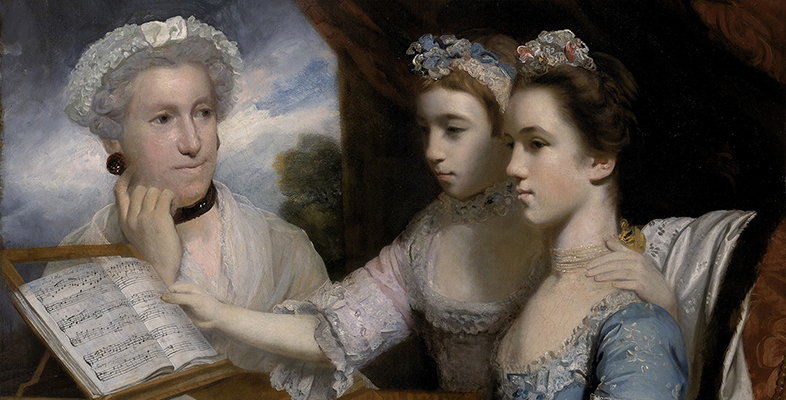3.3 Corelli and the London audience
You are now going to focus on one of the Italian composers listed in Walsh’s catalogue: Arcangelo Corelli. Early in his career, Corelli had settled in Rome under the patronage of Cardinal Benedetto Pamphili, and then Cardinal Pietro Ottoboni. His acclaim as a violinist and composer spread throughout Europe, aided by the surge in music publishing at that time. Beginning with the publication of his trio sonatas (Opus 1) in Rome in 1681, the immense popularity of his music saw numerous reprints of his works produced during his lifetime on an unprecedented scale.
Corelli’s music was particularly well received in England. Unlike on the Continent, where interest in his music eventually waned, Corelli’s repertory continued to be performed in the English capital throughout the eighteenth century, both in the concerts of professional musicians and by amateurs at home. Many of the Italian instrumentalists who performed in London’s concert halls – Pietro Castrucci (1679–1752) and Francesco Geminiani (c.1687–1762) to name but two – had been taught by Corelli himself and used this association to widen their appeal to the English audience. A number of composers resident in London – English and Italian – produced new editions of Corelli’s works: both Geminiani and the English composer Obadiah Shuttleworth (c.1700–1734) adapted Corelli’s early sonatas for larger ensembles – and the influence of Corelli’s style is evident in many of the instrumental works composed during this period (Edwards, 1976, pp. 51–2, 70).
Activity 6
Look again at Walsh’s catalogue of c.1710 (Figure 5). How many of Corelli’s works are listed here? What does this tell us about the extent of the popularity of his repertory?
Discussion
There are eight items by Corelli listed in the catalogue:
- ‘Corellis 1st Collection for 2 Flutes and a Bass’
- ‘Corellis 2d Collection for 2 Flutes and a Bass’
- ‘Corellis Solos for a Flute and a Bass’
- ‘Corellis opera primo’
- ‘Corellis opera Secundo’
- ‘Corellis opera Terza’
- ‘Corellis opera Quorto’
- ‘12 Solos by Arcangelo Corelli’.
To me, this broad selection of works by Corelli reflects the appeal of his compositions to the London audience. Walsh could count on the fact that Corelli’s music would sell well and therefore advertised several of these works in his catalogue of publications.
Corelli may have been hugely popular but this was not owing to an extensive repertory: his published output consisted solely of music for strings and continuo (the bass line above which instrumentalists would improvise a chordal accompaniment – also known as ‘basso continuo’ and ‘thoroughbass’). His work appeared in six sets: Opuses 1 to 4 (the ‘opera primo’, ‘secundo’, ‘terza’ and ‘quorto’ in Walsh’s catalogue) were trio sonatas (i.e. pieces for two solo violins above a continuo); Opus 5 was a set of solo sonatas for violin and continuo; and Opus 6 was a series of concerti grossi (singular concerto grosso). A concerto grosso is an orchestral work in which a larger group, usually of string instruments (the ‘ripieno’ or ‘concerto grosso’), alternate with a smaller group of soloists (the ‘concertino’, also usually string instruments – in Corelli’s case, two violins and a cello) (Edwards, 1976, p. 52). Following their initial publication in Rome, new editions were hastily printed in other centres, including London, sometimes arranged for other instruments, as is reflected in Walsh’s listings of music by Corelli for flute (i.e. recorder).
